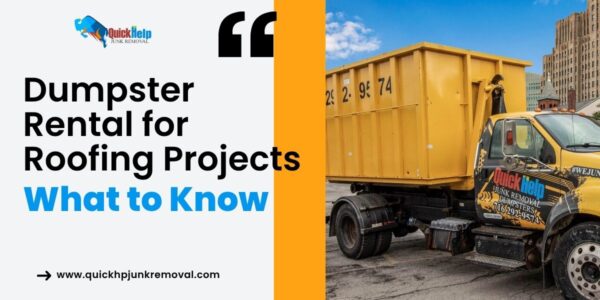Staring at that mountain of renovation debris in your garage and wondering how on earth you’re going to get rid of it all? You’re definitely not alone. The average home renovation generates between 1-4 tons of waste, and most of us never think about disposal until we’re knee-deep in drywall dust and broken tiles.
I’m about to show you exactly how to tackle that debris pile without breaking the bank on a dumpster rental or violating your HOA rules. Trust me, there are way more options than you think.
Dealing with renovation waste isn’t just about getting it out of your way—it’s about doing it responsibly, cost-effectively, and maybe even making some money in the process. When was the last time you actually enjoyed looking at your garage?
Let me guess: you thought a dumpster was your only option, but something always held you back. Maybe it was the cost, the permit requirements, or your narrow driveway. That “something” might be exactly what we need to work around…
Why Skipping the Dumpster Makes Sense

The Hidden Costs of Dumpster Rentals
Think a dumpster rental is just the quoted price? Think again. Most companies hit you with a base rate that sounds reasonable—until you see the final bill.
There’s the delivery fee, pickup fee, weight overage charges (and they’re brutal), permit fees if you’re putting it on the street, and don’t even get me started on the “environmental fees” that somehow appear on your invoice.
A typical 20-yard dumpster rental can easily cost $400-800 depending on your location and how long you need it. That’s before you factor in the stress of scheduling delivery around your project timeline.
Space and Accessibility Issues
Ever tried to fit a massive dumpster in a narrow driveway? Or dealt with HOA regulations that basically ban anything larger than a mailbox in your front yard?
Many homeowners face real logistical challenges: driveways that can’t accommodate delivery trucks, narrow streets where a dumpster would block traffic, or rental properties where you can’t just plop a container wherever you want.
Sometimes the dumpster creates more problems than it solves. You’re stuck with this giant metal box taking up space for days or weeks, becoming a neighborhood eyesore and a magnet for other people’s trash.
Environmental Considerations
Here’s something most people don’t think about: dumpsters are basically one-way tickets to the landfill. Everything goes in, gets compacted, and buried forever.
Many renovation materials can be recycled, repurposed, or donated instead of becoming environmental waste. Wood, metal, fixtures, and even some types of drywall don’t need to end up in a landfill.
When you skip the dumpster, you’re forced to think about each type of material individually. This naturally leads to more sustainable disposal methods and often saves you money too.
Types of Renovation Debris and Their Disposal Challenges
Wood and Lumber Materials
That pile of old framing, trim, and flooring might look like trash, but it’s actually potential treasure. Clean lumber can be worth real money, especially hardwood flooring or solid wood trim.
The challenge? Sorting through it all. Some pieces might be perfect for reuse, others good for recycling, and some genuinely trash. Nails, screws, and hardware need to be removed for most recycling programs.
Pressure-treated lumber requires special handling—many facilities won’t take it with regular wood recycling because of the chemicals used in treatment.
Drywall and Plaster Waste
Drywall is deceptively heavy and creates a dusty mess that’s annoying to handle. Most people assume it’s just trash, but gypsum (the main component) can actually be recycled into new drywall or used as soil amendment.
The problem is that drywall recycling isn’t available everywhere, and most facilities require it to be separated from other materials. Plus, painted or moldy drywall often can’t be recycled.
Old plaster walls present different challenges. They’re heavier than drywall, and if your home was built before 1978, there’s a chance the paint contains lead, which requires special disposal procedures.
Metal Components and Fixtures
Here’s where you might actually make some money. Copper pipes, brass fixtures, aluminum siding, and steel framing all have scrap value.
The key is knowing what’s worth separating. Copper is the gold standard—even small amounts can be worth the effort. Aluminum and steel are worth less per pound but add up quickly.
Some fixtures like vintage light fixtures or unique hardware might be worth more intact than as scrap metal. Check online marketplaces before heading to the scrapyard.
Flooring Materials
Hardwood flooring removal often yields materials that other DIYers would love to have. Even if it’s not perfect, reclaimed wood has a market for accent walls, furniture projects, or rustic decor.
Tile and stone can be incredibly heavy and awkward to handle. Some types can be recycled into aggregate for construction projects, but this varies widely by location.
Carpet and padding are probably the trickiest materials to dispose of responsibly. Most recycling programs don’t accept them, and they take up significant space in landfills.
Appliances and Fixtures
Old appliances contain valuable metals and components, but they also may contain refrigerants or other materials that require special handling.
Many utility companies offer appliance pickup services, especially for refrigerators and water heaters. Some even provide rebates for energy-efficient replacements.
Bathroom fixtures like toilets, sinks, and tubs might seem worthless, but architectural salvage companies often want them, especially if they’re vintage or high-quality.
Creative Disposal Solutions That Actually Work
Municipal Waste Programs and Bulk Pickup
Most cities offer bulk waste pickup services that residents either don’t know about or underuse. These programs are often free or low-cost and can handle significant amounts of debris.
The catch? You need to know the rules. Most programs require you to separate materials, schedule in advance, and place items at the curb on specific days. Some have restrictions on construction debris, while others welcome it.
Call your city’s waste management department and ask specifically about construction debris. You might be surprised by what they’ll take—and when the next pickup day is scheduled.
Scrap Metal Dealers and Recycling Centers
This is where your debris can actually make you money. Scrap metal dealers pay by the pound for copper, aluminum, brass, and steel.
Before you go, call ahead to ask about current prices and what they’ll accept. Some dealers want materials sorted and cleaned, while others will take mixed loads at a lower price.
Don’t forget about appliances—many scrap dealers will pick up large appliances for free because of their metal content. That old water heater or furnace might be worth more than you think.
Habitat for Humanity ReStores
These nonprofit stores accept donated building materials, fixtures, and appliances, then sell them to fund Habitat construction projects. It’s a win-win: you get rid of your debris responsibly, and you can claim a tax deduction.
ReStores are particularly interested in items that DIYers and contractors can use: unopened paint, unused tiles, working appliances, doors, windows, and cabinets in good condition.
Not everything qualifies—they have standards for safety and quality. But if you’ve got reusable materials, this beats the landfill every time.
Architectural Salvage Companies
These businesses specialize in reclaimed building materials, especially unique or vintage items. That old clawfoot tub, vintage light fixtures, or solid wood doors might be exactly what they’re looking for.
Salvage companies often pay for materials they can resell, or they might offer free pickup for items they want. Even if they don’t pay, it’s still better than paying to throw things away.
Search online for “architectural salvage” or “reclaimed building materials” in your area. Many have websites showing what they’re currently seeking.
Online Marketplaces for Usable Materials
Facebook Marketplace, Craigslist, and OfferUp are goldmines for selling reusable renovation debris. DIYers are constantly looking for affordable materials for their projects.
The key is good photos and honest descriptions. That stack of used lumber might not look like much to you, but it could be perfect for someone building a deck or workshop.
Price items to move quickly. You’re competing with new materials, so make your prices attractive enough that buyers will deal with pickup and potential imperfections.
Step-by-Step Debris Removal Strategy
Initial Assessment and Categorization
Before you move a single piece of debris, walk through your pile and take inventory. You need to know what you’re dealing with before you can plan your disposal strategy.
Create categories: valuable metals, reusable materials, recyclable items, hazardous materials, and actual trash. This might seem like extra work, but it saves time and money later.
Take photos of valuable or unique items. You’ll want these for online listings or when calling salvage companies. A picture is worth a thousand words when you’re trying to describe that vintage light fixture.
Sorting by Material Type and Value
Start with the most valuable materials first. Copper pipes, brass fixtures, and quality wood should be your priority—these items can actually make you money.
Separate materials that require special handling. Paint, batteries, electronics, and anything containing asbestos or lead need different disposal methods than regular construction waste.
Group similar items together. All your metal in one pile, wood in another, and so on. This makes it easier to transport and helps disposal facilities process your materials efficiently.
Timing Your Disposal Activities
Don’t try to get rid of everything at once. Spread your disposal activities over several weeks to avoid overwhelming yourself and to take advantage of different programs.
Schedule scrap metal runs when prices are good. Metal prices fluctuate, so timing your trip to the scrapyard can impact your payout.
Plan bulk pickup and donation runs around your schedule. Some services have limited availability, so book early and be flexible with timing.
Safety Considerations and Protective Gear
Renovation debris can be dangerous. Wear work gloves, safety glasses, and sturdy shoes every time you’re handling materials. No exceptions.
Be especially careful with glass, sharp metal edges, and splintered wood. Many injuries happen when people get careless while rushing to clean up.
If you’re dealing with materials from homes built before 1978, assume there might be lead paint or asbestos. When in doubt, consult a professional before handling questionable materials.
Maximizing Value from Your Debris
Identifying Valuable Materials Worth Selling
Not all debris is created equal. Learn to spot the valuable stuff before you accidentally throw away something worth money.
Copper is the holy grail—it’s worth significantly more than other metals. Look for copper pipes, wiring, and fixtures. Even small amounts add up.
Solid wood, especially hardwood flooring or trim, has resale value. Reclaimed wood is popular for DIY projects, and quality pieces can command good prices.
Vintage or unique fixtures might be worth more intact than as scrap. Research similar items online before deciding whether to sell them whole or break them down for parts.
Preparing Items for Sale or Donation
Clean items before selling or donating them. A little effort with soap and water can significantly increase perceived value.
Remove nails, screws, and hardware from wood materials. Clean lumber is easier to sell and commands higher prices than wood that needs additional prep work.
Bundle similar items together. A stack of matching trim pieces is more appealing than random individual pieces scattered around.
Pricing Strategies for Quick Sales
Price items to move quickly rather than trying to maximize profit. Your goal is getting rid of debris, not starting a business.
Research completed sales on similar items, then price yours 20-30% below the average. This accounts for the fact that your items are used and buyers need to pick them up.
Consider offering bulk discounts. Someone might buy your entire pile of lumber if the price is right, saving you multiple trips and transactions.
Tax Deductions for Donated Materials
Keep receipts for all donations to qualified nonprofits like Habitat ReStores. These donations can be tax-deductible, adding value to your disposal efforts.
Take photos of donated items and get receipts with itemized descriptions. Your tax professional can help you determine the deductible value.
Large donations might require professional appraisals for tax purposes, but most renovation debris donations fall well below those thresholds.
Making the Process Efficient and Cost-Effective
Batching Similar Materials for Pickup
Group your disposal activities by material type and location. Make one trip to the scrap dealer, one to the ReStore, and one to the recycling center rather than multiple trips for each type of material.
This saves time, gas, and the mental energy of constantly thinking about disposal. You can focus on other aspects of your project while efficiently handling waste removal.
Leveraging Community Resources
Check with local contractors, handymen, and DIY groups on social media. They often need materials you consider waste, and many will pick up for free.
Community Facebook groups and neighborhood apps like Nextdoor are great for finding people who want your leftover materials. One person’s debris is another’s treasure.
Some communities have tool libraries or maker spaces that accept building materials for member projects. These organizations often provide pickup services for larger donations.
Timing Strategies for Different Services
Bulk pickup services often have specific schedules. Plan your project timeline to align with pickup dates, so you’re not storing debris longer than necessary.
Scrap metal prices fluctuate based on market conditions. If you’re sitting on valuable metals, monitor prices and sell when they’re favorable.
Some donation centers have better staffing and processing times on specific days. Call ahead to find out when they’re best equipped to handle your donation.
Common Mistakes to Avoid

Mixing Materials That Should Be Separated
Don’t throw everything into one pile and hope for the best. Mixed materials are harder to dispose of and often end up costing more.
Keep metals separate from other materials. Contaminated scrap metal is worth less or might not be accepted at all.
Paint cans, chemicals, and hazardous materials should never be mixed with regular construction debris. They require special handling and can contaminate other materials.
Ignoring Local Regulations and Permits
Some disposal methods require permits or have specific regulations. Research your local rules before starting your disposal process.
Burning debris might seem like an easy solution, but it’s illegal in many areas and can result in hefty fines. Don’t risk it.
Some materials can’t be put in regular trash or bulk pickup. Know what your local services will and won’t accept before you put items at the curb.
Underestimating Transportation Needs
Renovation debris is often heavier and bulkier than you expect. Make sure your vehicle can handle the weight and size of what you’re trying to move.
Consider the number of trips required. Sometimes paying for delivery or pickup services is more cost-effective than making multiple trips yourself.
Don’t forget about loading and unloading. Heavy materials require proper lifting techniques and sometimes extra hands to move safely.
Planning Your Next Renovation to Minimize Waste
Accurate Material Calculations
Over-ordering materials is one of the biggest sources of renovation waste. Take time to calculate exactly what you need, then add only a small buffer for mistakes.
Keep detailed records of what you use versus what you order. This helps you make better estimates for future projects and identifies patterns in your waste generation.
Consider renting tools and equipment rather than buying them. This reduces clutter and ensures you’re using quality equipment without the storage burden.
Choosing Materials with End-of-Life Value
When possible, choose materials that retain value or can be easily recycled. Solid wood, metal fixtures, and quality tiles are examples of materials that don’t become worthless waste.
Avoid composite materials that can’t be recycled or reused. While they might be cheaper upfront, they become disposal problems later.
Consider the long-term implications of your material choices. Some materials that seem economical now might be expensive to dispose of later.
Building Disposal Planning into Project Timelines
Factor debris removal into your project timeline from the beginning. Don’t treat it as an afterthought that you’ll deal with “later.”
Schedule disposal activities during natural breaks in your project. Use the time while waiting for permits or deliveries to handle debris removal.
Build disposal costs into your project budget. Whether you’re paying for pickup services or spending time and gas on disposal trips, factor these costs into your overall project planning.
Conclusion
Dealing with renovation debris without a dumpster might seem challenging at first, but it’s actually an opportunity to be more creative, environmentally responsible, and potentially profitable. From identifying valuable materials that can be sold to finding community resources that welcome your donations, there are numerous pathways to responsible debris disposal that don’t involve expensive dumpster rentals.
The key is approaching your debris strategically—categorizing materials, timing your disposal activities, and leveraging the various services and markets available in your community. By taking the time to sort and plan, you can often dispose of renovation waste for free or even make money in the process.
Start by assessing your current debris pile and identifying the most valuable materials. Then work through the disposal options systematically, beginning with items that can generate income and moving toward those that simply need responsible disposal. Remember that patience and planning will save you both money and headaches while keeping materials out of landfills where possible.
Your next renovation project can be even more efficient when you plan debris disposal from the beginning, choosing materials with end-of-life value and building waste management into your project timeline. With these strategies, you’ll never need to stress about that post-renovation debris pile again.
Renovation Finished? Let Quick Help Junk Removal Clear the Debris—No Dumpster Needed!

Whether you’re upgrading your kitchen or giving your bathroom a fresh look, renovation projects always come with one thing: leftover debris. Don’t let that mess take over your garage or driveway.
Quick Help Junk Removal offers fast, affordable pickup services throughout Buffalo, Tonawanda, and nearby areas—no dumpster required. We’ll haul away wood scraps, old fixtures, drywall, and more—so you can enjoy your upgraded space without the clutter.
Sustainable Disposal That Makes a Difference
We don’t just dump everything in the landfill. When possible, we recycle usable materials and partner with donation centers to give your old items a second life.
Flexible Cleanup Options for Every Project
Whether you’re doing it yourself or hiring a contractor, we fit your schedule. Our friendly team handles the heavy lifting, so you don’t have to.
📞 Call or text us at (716) 292-9574 or (833) 784-2547
🌐 Book online anytime at quickhpjunkremoval.com
✅ Renovation complete? Let us take care of the mess—quickly, responsibly, and without the cost or hassle of a dumpster!





